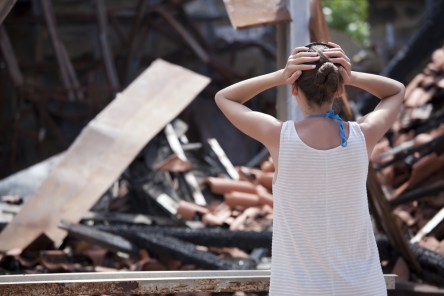For the past 50 years, California has been besieged by an increase in wildfires. More than 1.8 million acres have burned. Yet rebuilding efforts rarely reflect an inclination towards fire safety. Builders and homeowners must explore the affordable innovations available to end this deadly trend. The Underestimated Threat In 2018, the nation witnessed Camp Fire, the deadliest and most destructive wildfire in recent history. The fire blazed 135,000 acres and engulfed 14,000 buildings. Camp Fire claimed the lives of 85 people. The Environmental Protection Agency estimates that wildfires will contribute to increase in frequency. The land burned by wildfires has increased since the 1980s, and “of the 10 years with the largest acreage burned, nine have occurred since 2000.” Though the frequency of wildfires has spiked, many homeowners are choosing to rebuild their home without additional fire precautions. The problem isn’t isolated to California. In Western Australia, for example, a series of deadly bushfires ravaged four regions in the course of two years. Few homeowners rebuilt their homes with additional fire precautions in place. Fire-Resistant Architecture Some architects specialize in fire-resistant structures, such as Glenn Murcutt. His work in Australia includes black ceramic tiles that reflect radiant heat, rooftops equipped with permanent water features, and powerful sprinkler systems that protect home exteriors. The fire-conscious elements of Murcutt’s designs add only 5 percent to building costs. In the absence of a specialized architect, there are several recommendations for fire resilient rebuilds: Consider wildfire burn patters. Build at least 30 feet away from ridges and cliffs. Wildfires travel fastest uphill. A 20° increase in slope can double wildfire spread. Customize vents for fire safety. Add flame- and ember-resistant vents or metal screening to attic and crawl space access points. Upgrade glass features. Double paned and tempered glass...
Benchmarking Bonus
NAA Return on Energy
Currently, over 45% of the US commercial building market uses the ENERGY STAR®, the US EPA’s voluntary certification program designed to measure energy efficiency and improve resource management. At the heart of ENERGY STAR® lies the ability to track energy usage data to reduce energy consumption and improve building performance. “It all starts with taking a look at what you have and seeing what [information] you’re tracking and what data is available,” Craig Haglund, Program Manager, for the US EPA’s ENERGY STAR program, said in the National Apartment Association’s recent webinar, Financial Success with Energy Benchmarking. With comprehensive data collection and analytics capabilities, US EPA’s Portfolio Manager works in concert with ENERGY STAR for complete resource management oversight. “They say ‘you can’t manage what you can’t measure,’ which is 100% true,” Haglund continued, “but that misses what you can do with all that data.” Whole Building Consumption For building owners and managers interested in tracking their energy, water and waste metrics, ENERGY STAR provides an easy, comprehensive management tool: Portfolio Manager. With Portfolio Manager, building data can be tracked and analyzed. Users can create customized reports and monitor changes in energy, water, greenhouse gas emissions and more. “Portfolio Manager literally includes hundreds of measurement metrics,” explained Haglund. “Standardized reports can help users assess portfolio performance and share that information or integrate it into other presentations.” Those measurement metrics can be applied to any sized property portfolio, from one building to, in the case of East Coast real estate services firm Bozzuto Management, 63,000 units spread out over 220 communities and representing 2.1 million square feet of mixed-use development. “We have been using Portfolio Manager since 2012,” said Bozzuto’s Director of Sustainability, Peter Zadoretzky. “Over the last couple of years, we’ve gone from a messy,...


